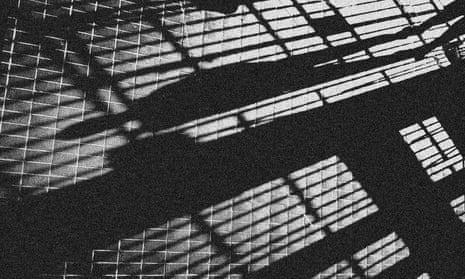More than half of the inmates held in prisons for young people in England and Wales are from a black and minority ethnic (BME) background, the highest proportion on record, the prisons watchdog has said, prompting warnings that youth jails have hit “American” levels of disproportionality.
About 51% of boys in young offender institutions (YOIs) – prisons for boys aged 15 to 17 and young adult men aged 18 to 21 – identified as being from a BME background, Her Majesty’s Inspectorate of Prisons (HMIP) found.
In addition, the inspectorate found 42% of children in secure training centres (STCs) – prisons for children up to the age of 17 – were from a BME background.
The proportion of BME boys and men behind bars in YOIs in England and Wales is nearly four times the 14% BME proportion of the wider UK population.
David Lammy MP, who published a review into the treatment of and outcomes for BME individuals in the criminal justice system in 2017, said he was shocked by the figures, which have rocketed since he released the report, when the BME proportion in YOIs and STCs was just over 40%.
He said: “This is very alarming. England and Wales are now hitting an American scale of disproportionality in our youth justice system. The government urgently needs to step up implementation of my review.
“There are real problems with the youth justice system. I’m very concerned by how youth justice courts are performing. They’re not very close to communities. Parents seem to be disengaged. Community members seem to be disengaged.”
Lammy said that as part of his research he observed positive practices in places such as New Zealand, where the community engaged in youth justice.
“That’s not the case in this country. It’s really remote. Magistrates courts are being cut so it’s even more remote,” he said.
The Labour MP for Tottenham repeated concerns about the lack of diversity within the judiciary.
“I raise some serious concerns about our courts, about the paucity of black and ethnic minority judges and magistrates right across the country. I thought the government response was poor in relation to the judiciary. I said that at the time, I still believe that.
“There are too many judges that have no connection to the areas these young people are growing up. They’ve never even done a day trip. I think that’s a problem.”
Lammy’s review said prosecutions against some BME suspects should be deferred or dropped to help tackle the bias against them in the criminal justice system.
He said allowances should also be made for younger defendants’ immaturity and criminal records should be sealed to help former offenders find work, adding that statistics suggested discrimination was worse than in the US in some cases.
The inspectorate found that the proportion of boys who identified as being from a BME background varied depending on the establishment, from one in five (21%) at the Keppel unit in West Yorkshire, to nearly three-quarters (71%) at Feltham in west London.
The percentage identifying as being from a BME background also varied between STCs, from 33% at Oakhill in Buckinghamshire to 55% at Medway in Kent.
Frances Crook, the chief executive of the Howard League for Penal Reform, said: “For the first time, more than half of boys in prison identify as being from a black or minority ethnic background.
“Sixteen months after the Lammy review was published, it is disturbing that disproportionality is growing.”
Between 2013-14 and 2017-18, the number of children including 18-year-olds held in YOIs, STCs and secure children’s homes fell by 24%, from 1,318 to 997, according to HMIP’s report.
The assessment covered the experiences of boys in five male YOIs, plus a specialist unit for boys, and children – including a small number of girls – held in three STCs.
The watchdog warned that too many youngsters felt unsafe in custody, saying signs of improvement have yet to translate into a significant shift in children’s perceptions of their treatment and conditions.
HMIP’s analysis, based on a survey of 686 children detained in 2017-18, found just over a third (34%) of those held in STCs reported feeling unsafe at some point since arriving at the centre, while the figure was 40% for YOIs.
